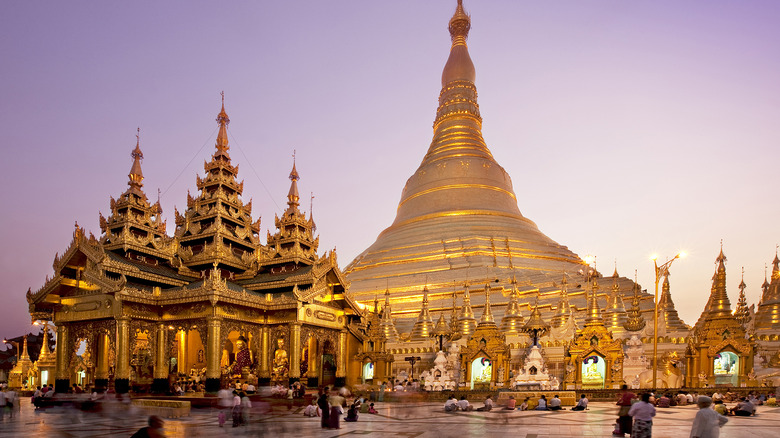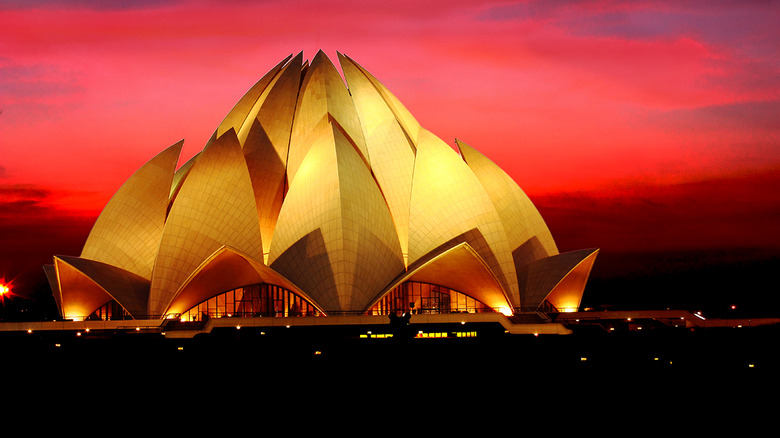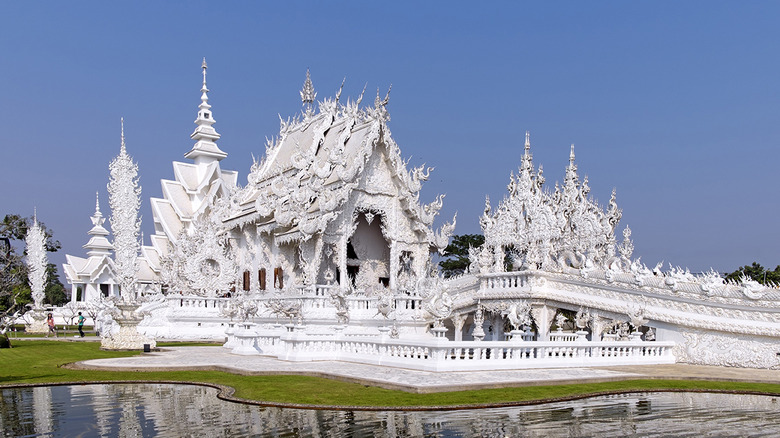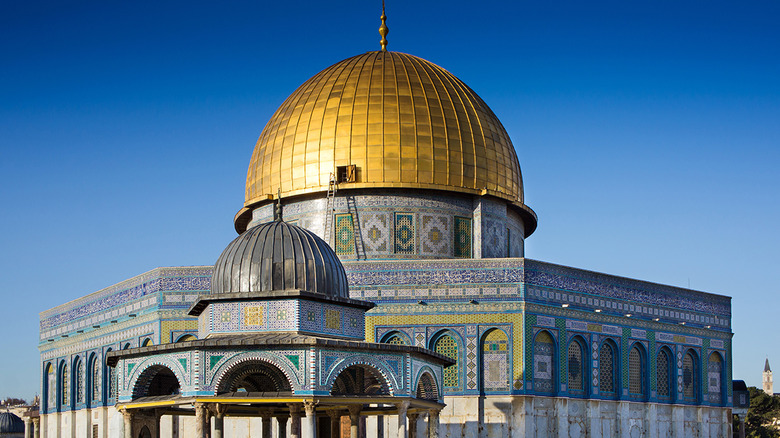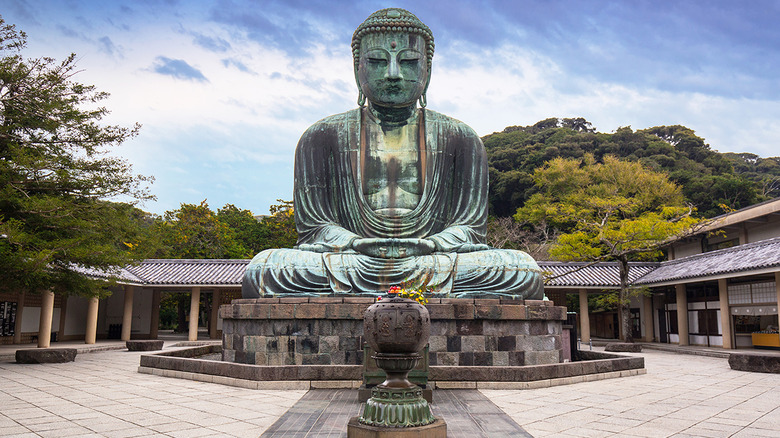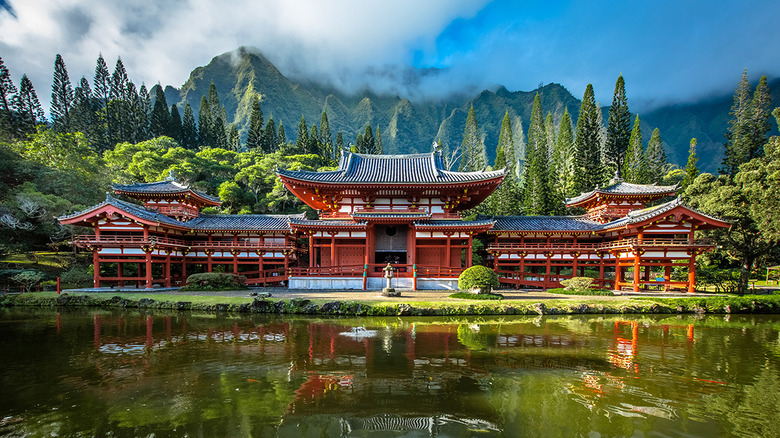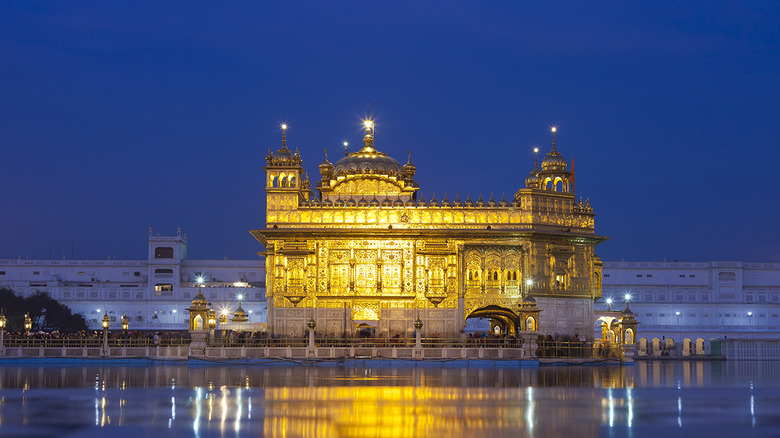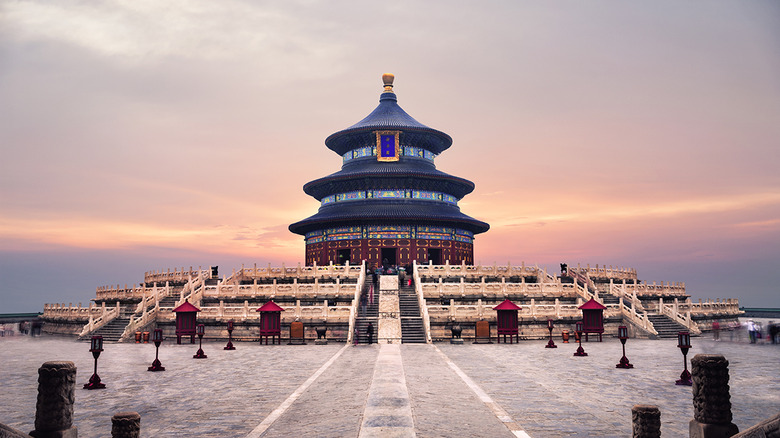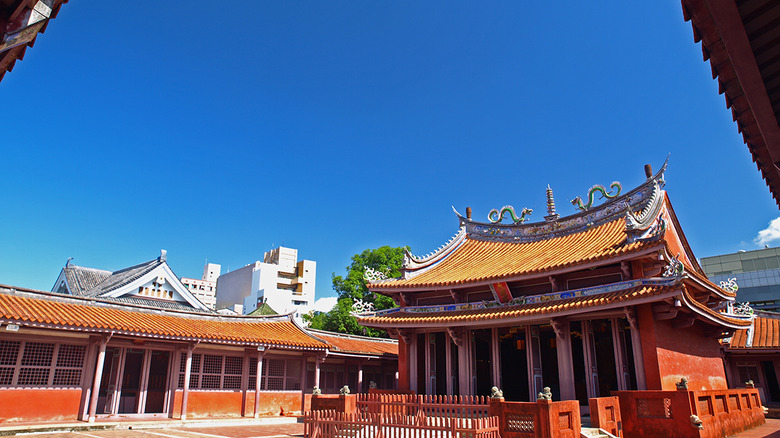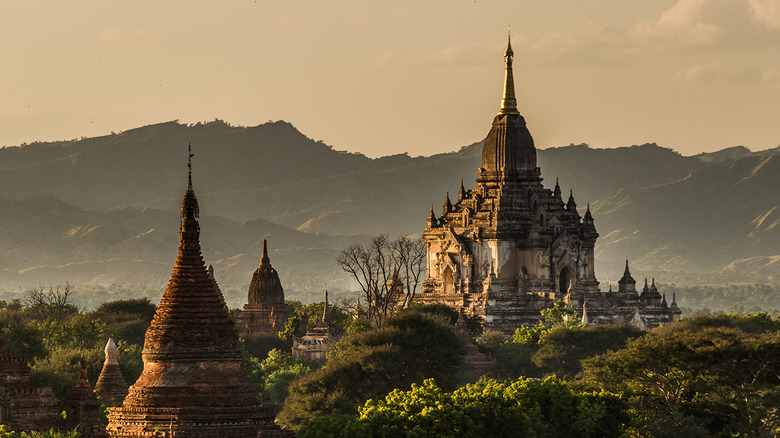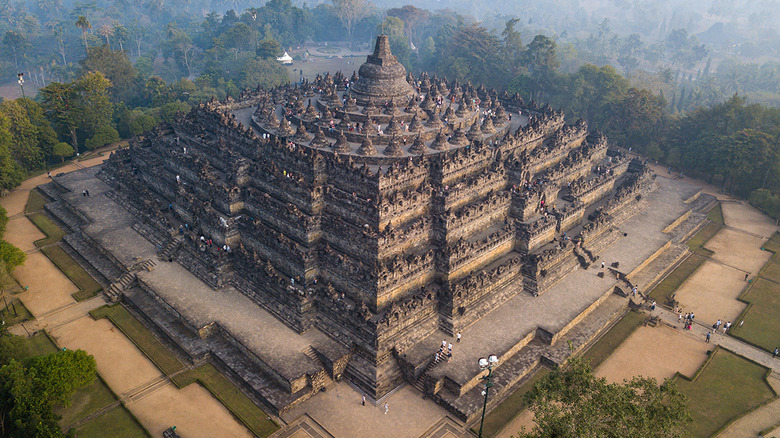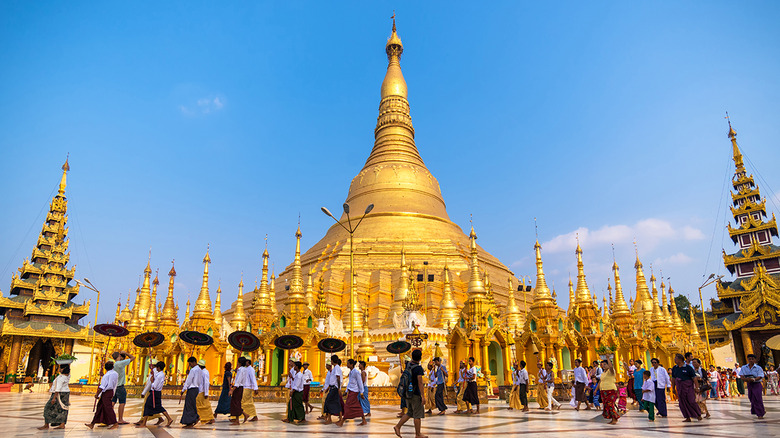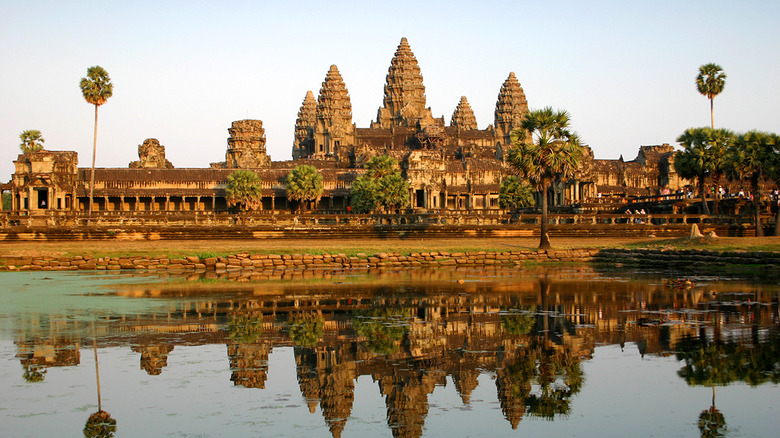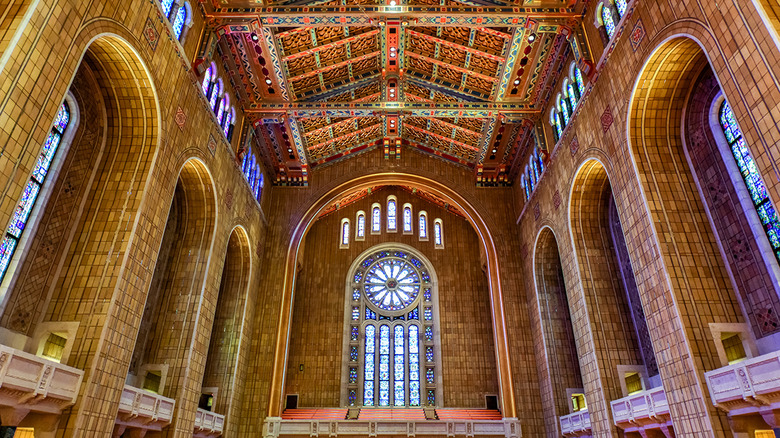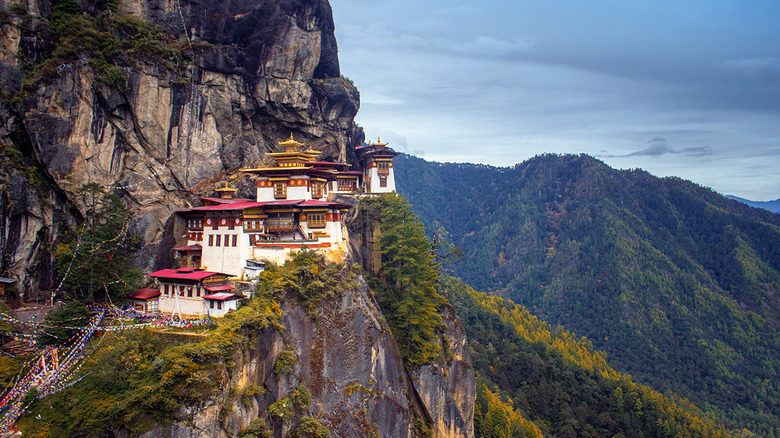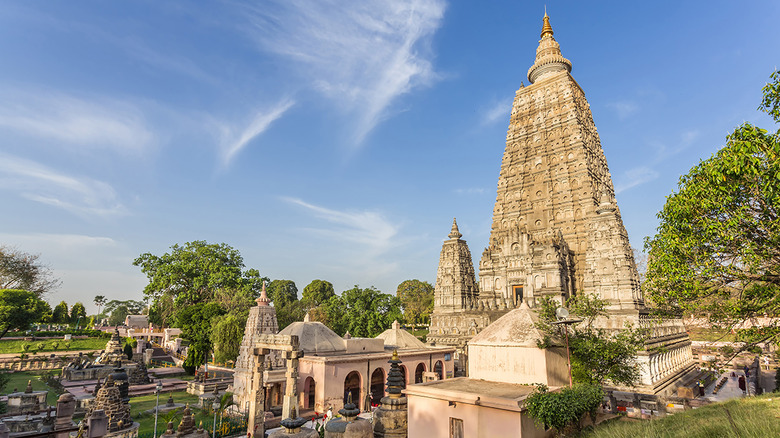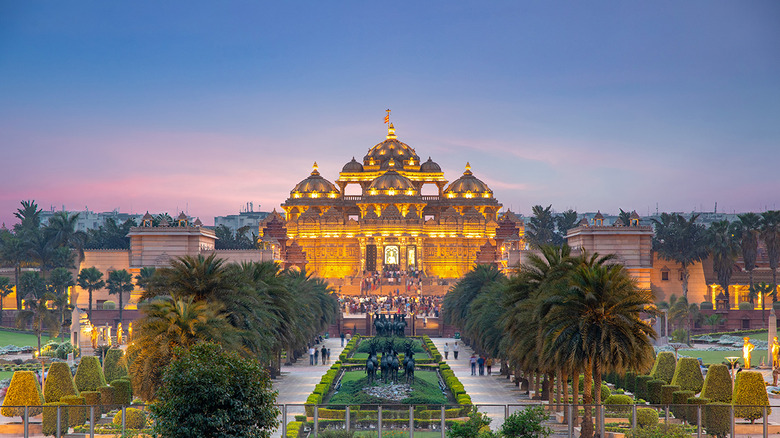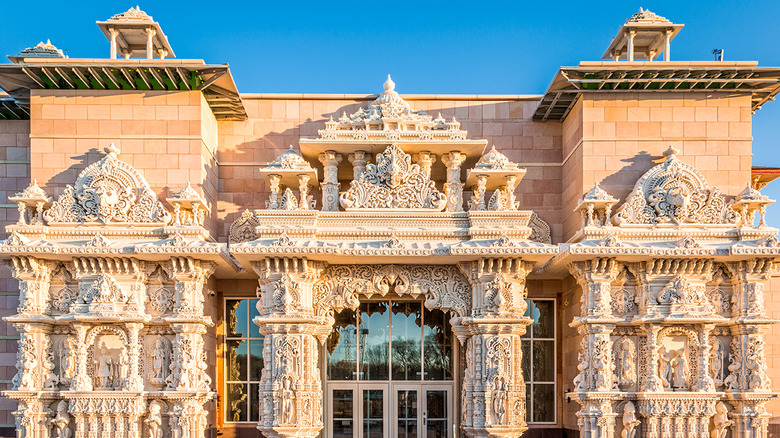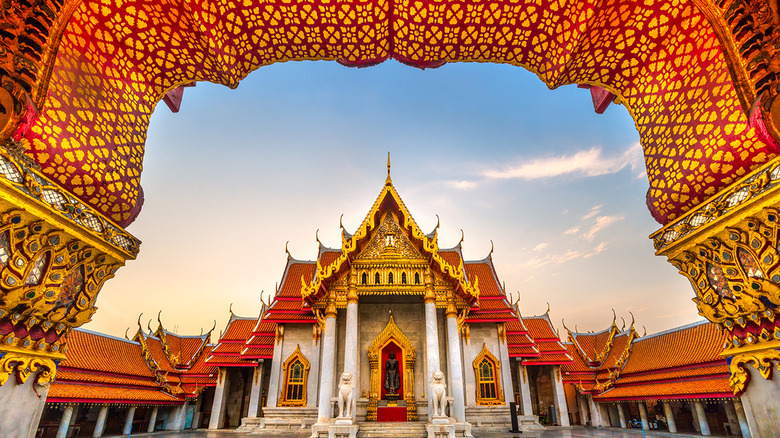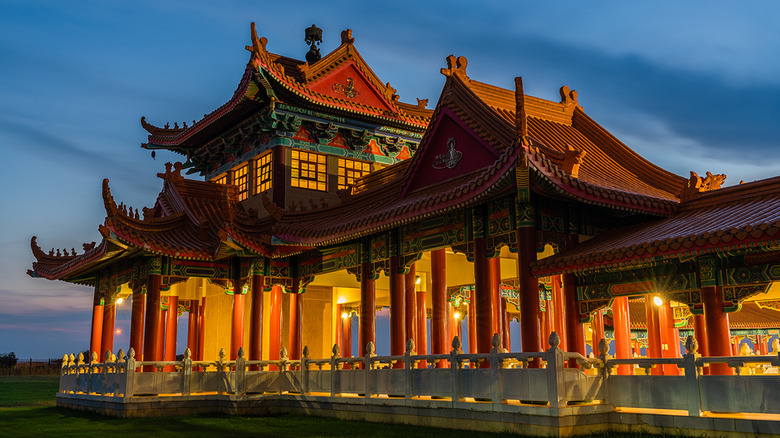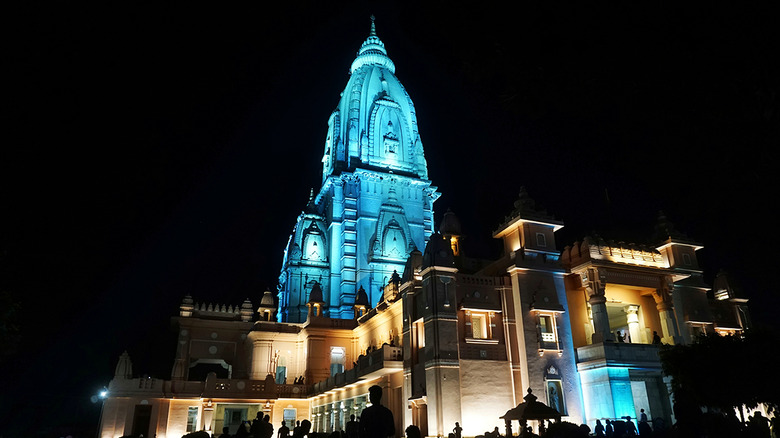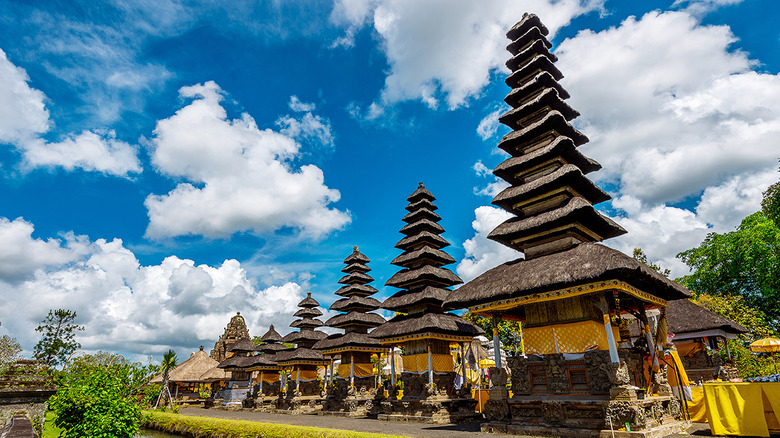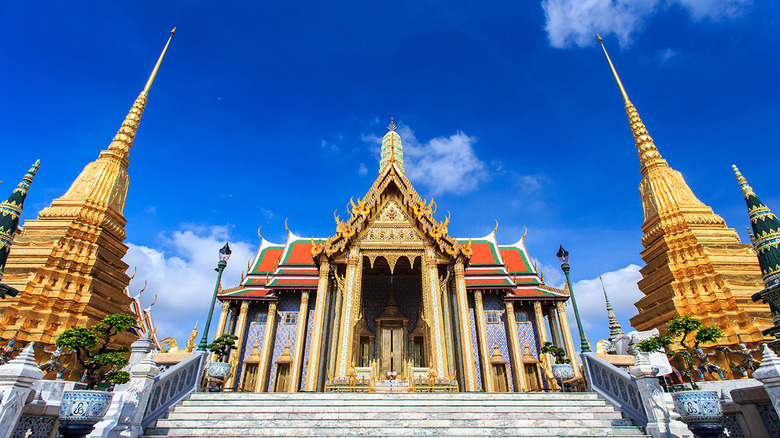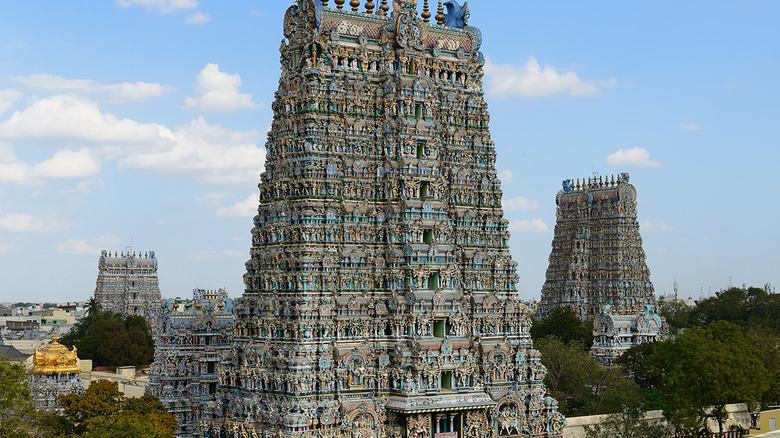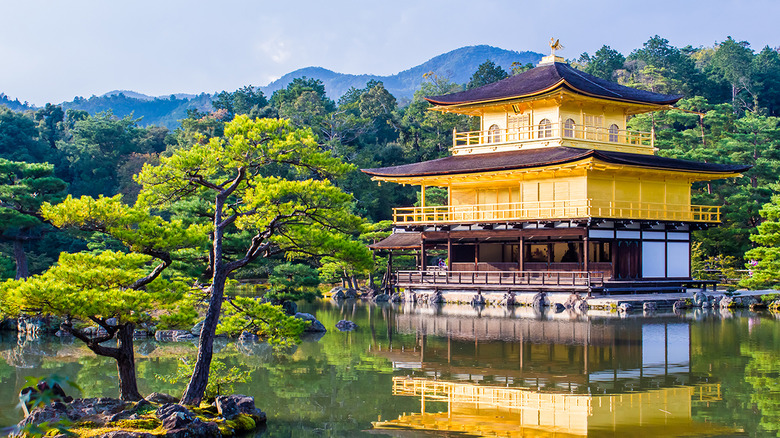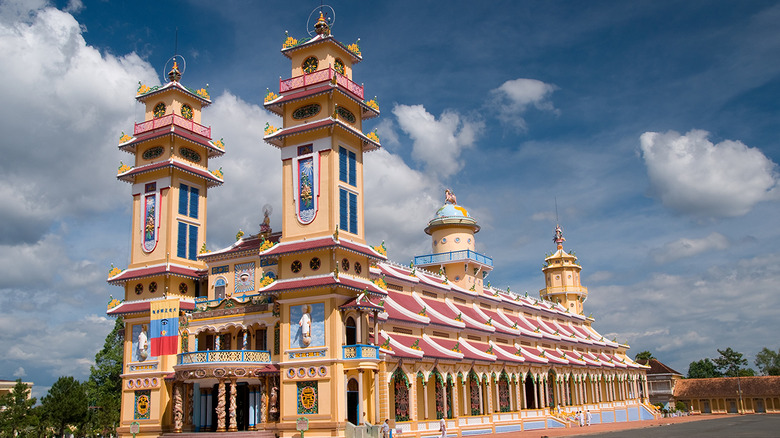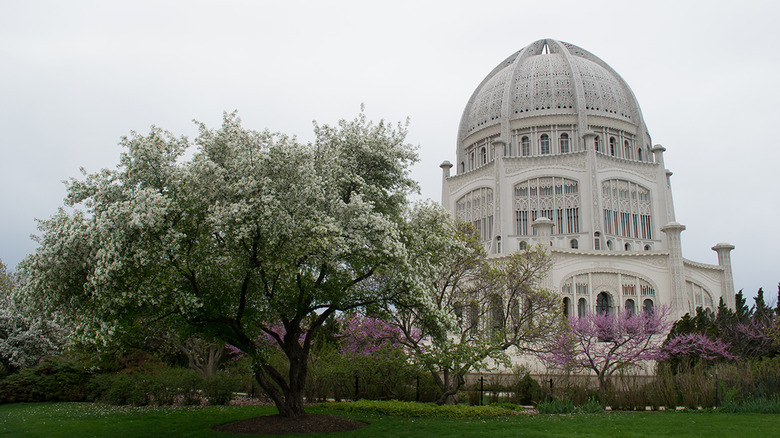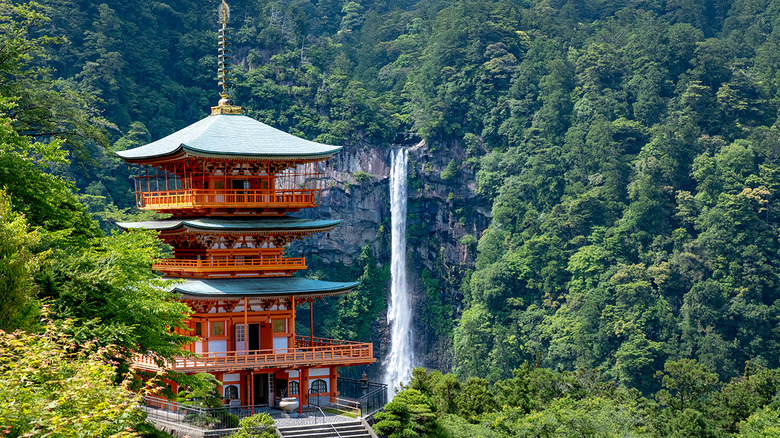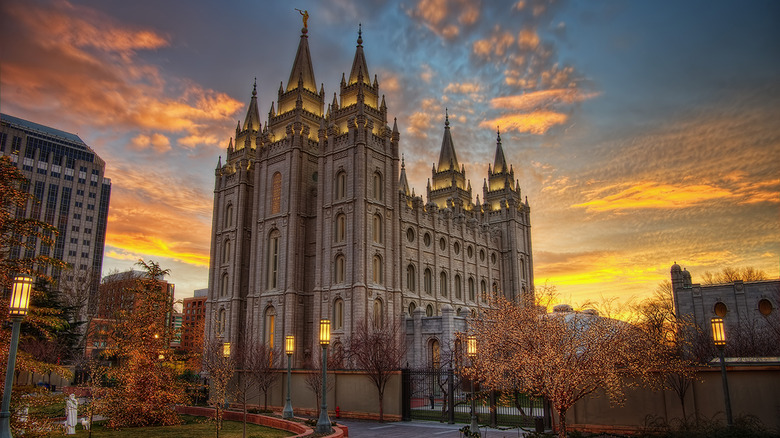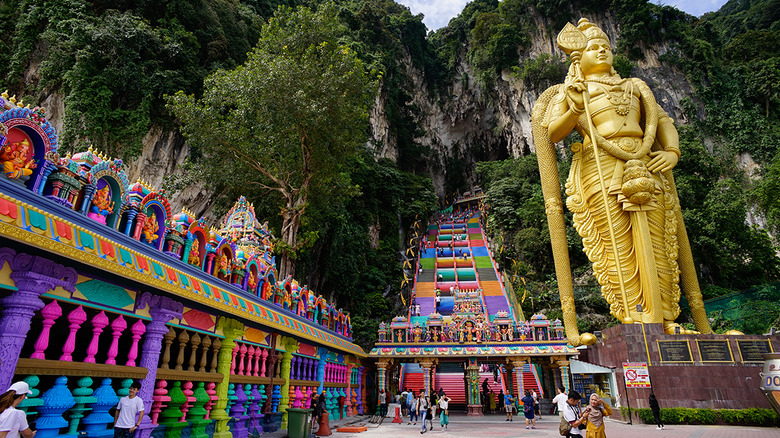The Most Beautiful Temples In The World
Both places of worship and architectural marvels, these grand temples around the world are an amazing sight.
Lotus Temple (New Delhi)
The lotus is sacred in many religions, including the Bahá'í faith, and as a floral symbol, it generally signifies enlightenment, rebirth and purity. The Bahá'í House of Worship in New Delhi, popularly known as the Lotus Temple, takes on the shape of one to symbolize the unity of mankind, key to the faith.
Wat Rong Khun (Chiang Rai, Thailand)
Wat Rong Khun is an undiscovered wonder of Thailand. Its distinctive design is in the Thai Buddhist style, and its pristine and white appearance seems to almost sparkle.
Temple Mount (Jerusalem)
Jerusalem is an important city in Christianity, Islam and Judaism, and the Temple Mount is a significant place to all three religions. In addition to being the holiest site in Judaism, which dictates it as the site where Abraham offered up his son as sacrifice, it is also the third holiest site for Muslims, with the iconic Dome of the Rock and Al-Aqsa Mosque having been built here.
Kotoku-In (Kamakura, Japan)
Kotoku-In is a Buddhist temple famous for being the home of the Great Buddha of Kamakura, the largest outdoor Buddha in Japan. Azaleas color the scenery during the blooming season, and the temple is surrounded by beautiful gardens as well.
Byodo-In Temple (Kaneohe, Hawaii)
A lesser-known spot in Hawaii, the Byodo-In Temple is situated at the base of the Ko'olau Mountains of Oahu. The non-practicing Buddhist temple, which welcomes people of all faiths for worship, is surrounded by meditation spots, waterfalls, and a reflection pond — it even has some wandering wild peacocks.
Golden Temple (Amritsar, India)
India's Sri Harminder Sahib, or Golden Temple, in Amritsar is one of the most sacred pilgrimage spots in Sikhism and gets its name due to the fact that it's built with 400 kilograms of gold leaf. The temple puts great emphasis on acts of kindness, notably feeding about 20,000 people for free every day and up to 100,000 for special occasions.
Temple of Heaven (Beijing)
The Temple of Heaven in Beijing has a complex consisting of 92 buildings with 600 rooms. Two main sites are the Imperial Vault of Heaven and the Circular Mound, which is open to the heavens.
Temple of Confucius (Qufu, China)
The Temple of Confucius is also a historical mansion that is the family home and resting place of the legendary philosopher and politician. In addition to the tomb of Confucius, the remains of more than 100,000 descendants are at the complex's cemetery.
Gawdawpalin Temple (Bagan, Myanmar)
About 2,000 monuments and pagodas lie in the Bagan plains of Myanmar, including Gawdawpalin Temple. Towering above lush green trees, the russet tones of the temple match those around it in a mesmerizing sight.
Borobudur (Java, Indonesia)
The Indonesian island of Java is an underrated spot that's home to the largest Buddhist temple in the world. The Borobudur temple, which was built in the eighth and ninth centuries, has a main three-tiered stupa surrounded by 72 other stupas, each containing a statue of the Buddha.
Shwedagon Pagoda (Yangon, Myanmar)
Said to house multiple holy Buddhist relics, including strands of hair from the Buddha himself, Shwedagon Pagoda is a 2,500-year-old temple in what is now the coastal city of Yangon in present-day Myanmar. It was built using hundreds of gold plates and 4,531 diamonds encrusted into the top of its stupa.
Angkor Wat (Siem Reap, Cambodia)
The temple of Angkor Wat is one of the largest religious structures in the world, originally built in the 12th century as a Hindu temple before being converted for Buddhist use. Marveling at this architectural achievement and its surrounding complex is a bucket-list experience for every American.
Temple Emanu-El (New York)
New York City has plenty of sights, but you may not know about Temple Emanu-El. The new synagogue was designed in the Romanesque-revival style by Jewish architects and continues to be an important site in Reform Judaism.
Paro Taktsang (Upper Paro Valley, Bhutan)
The South Asian nation of Bhutan's most iconic spot is the Taktsang Palphug Monastery, better known as Paro Taktsang. Situated on a cliff more than 10,000 feet above sea level, the temple complex is a breathtaking sight surrounded by majestic mountains and lush green valleys.
Mahabodhi Temple (Bodh Gaya, India)
One of the first Buddhist temples built from brick that is still standing, the Mahabodhi Temple is an impressive 164 feet tall. One of the four main holy sites related to the life of the Buddha, the temple complex was established in the third century B.C. on the site where it is said he first achieved enlightenment.
Swaminarayan Akshardham (New Delhi)
More than 8,000 volunteers from around the world helped build the Hindu temple Swaminarayan Akshardham in New Delhi, taking more than 300 million volunteer hours. This stunning work of architecture in the capital of India was made with marble and sandstone and is surrounded by lovely gardens and a courtyard.
Shri Swaminarayan Mandir (Robbinsville, New Jersey)
Consecrated in 2014, the Shri Swaminarayan Mandir is a Hindu temple in Central New Jersey and is made entirely of Italian Carrara marble. The intricate carvings of the temple are one of the most breathtaking sights in America and include 13,499 individual carved stone pieces.
Wat Benchamabophit (Bangkok)
A landmark of the renowned city of Bangkok, Wat Benchamabophit — often known to foreigners as the Marble Temple — is an excellent example of traditional Thai architecture. The Buddhist temple was built using imported Italian marble and is notable for its striking golden and red roof.
Nan Hua Temple (Bronkhorstspruit, South Africa)
The largest Buddhist temple in Africa, Nan Hua Temple is also a seminary that draws in students eager to learn from all over the continent. Influenced by the architecture of eastern Asian temples, the building of Nan Hua Temple was supported by the significant Taiwanese community in South Africa.
Kashi Vishwanath Temple (Varanasi, India)
Kashi Vishwanath Temple lies on the banks of the Ganges River where thousands of pilgrims come every year for a ritual bath. Located in Varanasi, one of the oldest cities in the world, the temple was built in the 18th century.
Pura Taman Ayun (Bali, Indonesia)
Located in Bali, a paradisiacal island where it's always summer, Pura Taman Ayun dates back to 1634. Built in the traditional Balinese style, the temple grounds have a fountain area and lotus pond, as well as gardens.
The Grand Palace (Bangkok)
Built in the late 18th century, Wat Phra Si Rattana Satsadaram is the royal chapel of the Grand Palace of Bangkok. The perfect spot for some self-care in the form of meditation or worship, it's also known as the Temple of the Emerald Buddha due to the elaborately emerald Buddha sitting on a golden throne inside.
Meenakshi Amman Temple (Madurai, India)
The Meenakshi Amman Temple in southern India is striking due to the rainbow of colors used to paint the figurines that cover the exterior of the Hindu temple. The temple was rebuilt in the 16th and 17th centuries after being destroyed along with much of the city in 1310.
Kinkaku-ji Temple (Kyoto, Japan)
Kyoto is known for its gorgeous cherry blossoms and temples, and the Kinkaku-ji Temple —also known as the Golden Pavilion — is particularly lovely and iconic. Covered in gold leaf and home to sacred relics, the temple also has a garden and a teahouse on its grounds.
Cao Dai Temple (Tay Ninh, Vietnam)
There are numerous temples in Vietnam dedicated to the Cao Dai religion, a widely encompassing religion that reveres figures from many religions and historic periods, including the Buddha, Jesus Christ, Muhammad, Joan of Arc and Julius Caesar. Perhaps most impressive among them is the Cao Dai temple in Tay Ninh, which has bright yellow towers and red roofing that makes it stand out.
Bahá'í House of Worship (Wilmette, Illinois)
Located about 16 miles outside of Chicago, the Bahá'í House of Worship is stunningly white both inside and out thanks to a combination of white Portland cement and quartz. Its nine gardens are also considered worship spaces, some including the pretty waters of a reflecting pool.
Seiganto-ji Temple (Wakayama, Japan)
A bright red temple with soft green roofs on its three tiers, the Seiganto-Ji Temple is a postcard-worthy sight. It stands against a backdrop of intense greenery and the beautiful waterfall known as Nachi Falls.
Salt Lake Temple (Salt Lake City)
The iconic Salt Lake Temple is currently under renovation, yet is impressive all the same. Built in the Gothic style, the impressive temple of the Church of Jesus Christ of Latter-day Saints is located in Salt Lake City's Temple Square, the most visited place in Utah.
Batu Caves (Selangor, Malaysia)
Located just north of the Malaysian capital of Kuala Lumpur, the Batu Caves have three main caves on site, accessed using a 272-step flight of stairs up a limestone outcropping. Several temples can be found within the largest cave, the Temple Cave, at the top of the steps. At the bottom of the steps lies the gigantic statue of the Hindu deity Murugan, making it one of the most awe-inspiring places of worship in the world.
